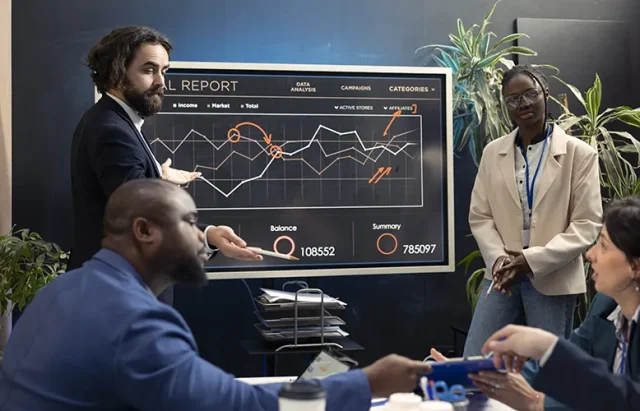
Big data powers the modern travel industry by giving tour operators new insights about their customers. The travel industry’s latest best practices now include big data to uncover what customers do when they travel. The company can do better business by understanding tour data and using it to set better prices and improve overall operations. This article investigates how big data transforms tour operator booking software to provide better worldwide travel experiences.
1. What Is Big Data in the Travel Industry?
Travel and tourism big data refers to massive amounts of unstructured and structured data that consumers generate through several touchpoints. The data are collected, crunched, and used to receive actionable information which enables tour operators to enhance the quality of services and offer targeted experiences. According to the National Center for Biotechnology Information, traveling has been profoundly affected by the fast development of big data technologies. Technology platforms, smartphones, and online social networks have exponentially increased volumes of data available, offering more insights into behaviors and tastes of travelers for the operators.
Travel big data encapsulates a wide range of sources of data. Travel operators make use of these sources to build a holistic view of their travelers, facilitating more informed decision-making. Now, let’s take a closer look at the most critical sources of traveler data collected:
- Booking History: Past booking history, including travel locations, travel dates, accommodation choice, and mode of transport. This data helps operators with popular traveling trends and repeated choices in terms of personalized services and offers.
- Browser Behavior: Data on what users do when visiting travel websites, including pages they visit, searches they conduct, and how much time is spent in particular areas. Operators can observe what prospective travelers are most interested in through monitoring browsing patterns and tailor their marketing and product accordingly.
- Social Media Interactions: Social media is no longer a treasure trove of knowledge regarding the feelings and likings of travelers. Operators analyze tweets, comments, likes, shares, and travel hashtags to identify emerging trends and what individuals are saying about places, experiences, and services.
- Feedback and Reviews: Collecting and quantifying feedback, ratings, and reviews gives a clear picture of the customers’ satisfaction. Monitoring patterns in repeated pain points and preferences allows operators to refine their services and address service shortfalls.
- Location Tracking and Mobility Patterns: Real-time data on mobility of tourists is gathered from loyalty schemes, GPS equipment, and mobile applications. This data supports operators in understanding traveling patterns, principal roads, and rush hours, facilitating logistics and enhancing travel experience.
2. How Tour Operator Software Leverages Big Data
Tour operator systems use big data to update all parts of the vacation service. These are main parts where data-based insights now help tour operators and their customers:
- Dynamic Pricing Optimization: Tour operators use real-time information from daily analytics to improve their pricing methods based on patterns of customer demand and activity. Prices on their website automatically adapt to changing market demand during high season and unexpected increases in travelers to remain competitive and boost profits.
- Personalized Travel Experiences: AI systems examine client habits to create individual trips that suit their interests. Through AI-enhanced filtering, tour operators provide travel recommendations that help users find their preferred destinations and make their trip more satisfying.
- Improved Customer Engagement and Loyalty: Using predictive analytics, tour operators can detect what customers need before they ask and give better service to retain customers. A tour operator’s sales team can design special deals and customer rewards that match personal tastes to bring guests back again.
3. Predictive Analytics: Travel Trend Forecasting
One of the most potent strengths of big data is predictive analytics, owing to which tour operators are made capable of predicting trends and coming to fact-based conclusions.
Predictive models examine past data to make predictions about peak travel periods, discover potential new destinations, and forecast spikes in demand. This allows tour operators to make appropriate plans, maximizing resource deployment and service delivery. The Federal Highway Administration (FHWA) highlights that travel demand models are instrumental in forecasting future travel patterns, which is crucial for effective transportation planning.
AI-based technology continuously refines these forecasts as it learns new data. Since patterns change over time, software becomes more reliable, allowing the operators to be ahead of curves and offer swift suggestions.
4. Maximizing Operational Efficiency with Data-Driven Decisions
Big data is not all about personalizing travel experience; it also has a critical role in streamlining the operational side of tour management. In-real-time data analysis allows tour operators to make rapid, effective decisions that improve efficiency, reduce costs, and maximize overall service quality. Two key areas where big data most effectively impacts operations are route optimization and inventory management.
Route Optimization and Smart Scheduling
Real-time data assists tour operators in route and schedule optimization for a more convenient travel experience. With GPS information, traffic routes, and historical travel times combined, tour operator software can provide the most optimal routes with reduced delays and traffic congestion. For instance, if the statistics show that a particular road is constantly jammed during peak hours, the system will automatically suggest alternative routes or shift timings. Further, tour plans can be dynamically realigned based on flight cancellations, weather conditions, or unexpected events so that travelers suffer minimal inconvenience. Such adaptability leads to customer satisfaction and reduces operational bottlenecks.
Inventory and Resource Planning
Tour capacities, vehicle assignment, and room bookings are intimidating tasks, but big data simplifies them. With booking trends monitoring and analysis of traveler demand, tour operators can anticipate peak periods and schedule the inventory in advance. Overbooking is prevented while resources like buses, guides, and rooms in hotels are maximally utilized. Automated alerts may also notify operators when tour capacities are near full load so that advance planning for resources is possible.
In addition, big data makes it possible to manage suppliers by tracking levels of performance of hotels, transport services, and activity providers. Operators can track these levels to ascertain credible suppliers and renegotiate contracts at a performance-based level to guarantee better delivery of services. In addition, predictive analytics will be able to calculate projected demand, enabling operators to plan and avoid last-minute shortages of resources.
Wrapping Up
Tour operators use big data technology to change how they price services, make tailored customer offers and run their business more effectively. Modern technology will keep raising the importance of big data, which improves travel innovation and creates better experiences for travelers. However, this power demands that companies who use it should properly safeguard their data and use it ethically.





